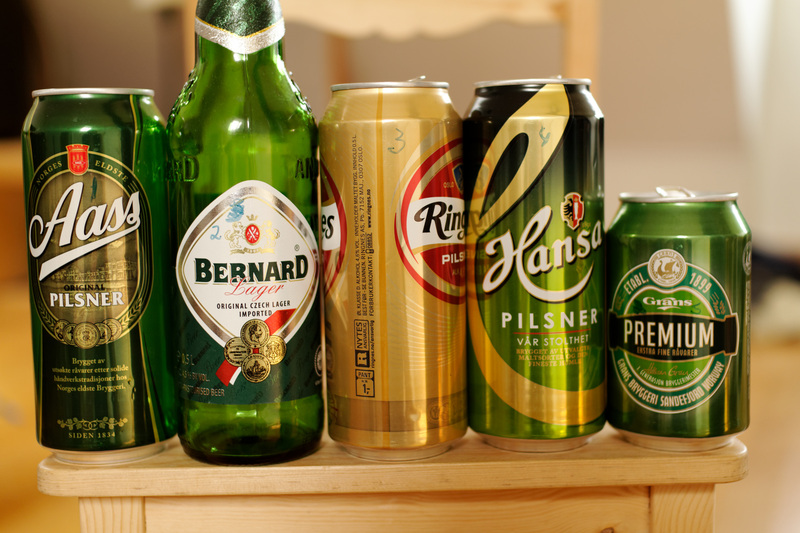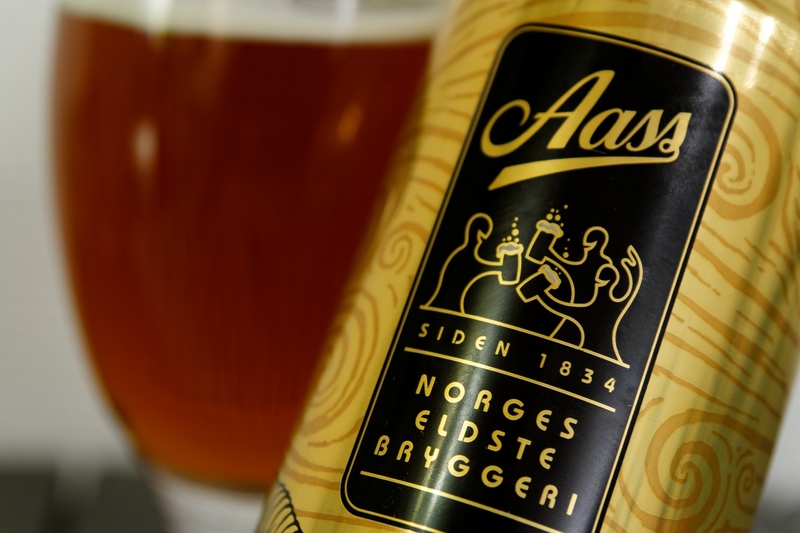Are macro lagers really all the same?

Ready to test |
Beer enthusiasts like to say that people who argue over which industrial pale lager is best are missing the point, because they all essentially taste the same, and none of them are very good, anyway. I personally agree with that, and that now that there are so many good craft beers available everywhere, there's really no reason to drink this stuff at all.
However, beer enthusiasts also firmly believe that there are substantial quality differences between the macros. How can this be, if they're all really the same? And do we really know that there are quality differences, or is that just something we think, based on reputation and who we like the most?
I've seen many times that the preconceptions I take with me when I taste something really influence how I experience it, which makes me sort of skeptical that these beers really live up to the image we have of them. So why not do an experiment, and find out?
That's what I decided to do. I bought one can of each of the following beers:
- Ringnes Pilsener
- Hansa Pils
- Aass Pilsener
- Grans Premium
- Bernard Svetly
The idea was to get my wife to serve me these blind. She would bring me a filled glass, write the number in the sequence on the can, and hide it in a cupboard. I would taste the beer and do a normal RateBeer rating, then make a note of what I thought it might be. Then, at the end, we'd match my ratings and guesses up against the actual beers, and we'd see if we could learn anything from the comparison.
Before I started, this is what I thought I would find:
- Ringnes Pilsener
- Ringnes is the Carlsberg-owned near-monopolist that everyone loves to hate. I expected the beer to be a basic pale lager with a grainy taste, and an unpleasant yeasty aftertaste that gets increasingly worse as you drink it.
- Hansa Pils
- Another big Norwegian macro. I don't remember much about this one, but expect it to be much like Ringnes, but perhaps a little cleaner, and perhaps to have a slightly metallic bitter aftertaste.
- Aass Pilsener
- Aass is one of the smaller macros, a family-owned brewery that sticks closer to traditional brewing methods and ingredients than does Ringnes. I expected this beer to be quite clean, but without much flavour.
- Grans Premium
- Grans was started some decades ago in defiance of the stranglehold of the big brewers, but without any intention of brewing beers that were in any way different. Their main selling point is price, and they have a reputation for being low-quality. I expected this beer to be well below average, with butter and yeast flavours in it.
- Bernard Svetly
- Bernard is a Czech brewery that's quite highly regarded. They brew with traditional methods and ingredients, and their beers are not even pasteurized. I expected this beer to be clean and fresh, with a touch of hops, but without too much taste.
Then, over the course of a few evenings, we tried it. One evening I got two beers. Then we were busy and there was a long pause, after which I did the final three in a single evening. By the time we were finished I was really pleased; I had a clear ranking of the five beers, and I was pretty certain I had identified all five.
Then we went down into the cellar, and my wife showed me which beer was which. It turned out I hadn't identified a single beer correctly. However, there was a kind of match between the ranking and my starting assumptions. Let's go through it in detail.
- Beer #1
- This one was nice, clean, and fresh, with some floral straw and grass notes. Light hop aroma, with a touch of bitterness. I quite liked it, and put it first in the quality ranking. I identified this as Bernard, but it turned out to be Aass. So the beer I thought would be second-best came out first. Not so bad.
- Beer #2
- This beer tasted of rubbery cardboard, and buttery metal. I didn't like it at all, and immediately thought it was Grans. I put it last in the quality ranking. However, it was Bernard, the beer that should have been first. Ahem. A total miss there, and I'm not sure why.
- Beer #3
- This one was not too bad, with a light grainy apple and paper taste, with some salt and butter in the aftertaste. I thought the finish kind of harsh, and so put this fourth in the quality ranking, identifying it with Hansa. It turned out to be Ringnes. Not a bad miss, really.
- Beer #4
- This one was clean, but sort of bland and boring. Very light in flavour, but some flowers and mint initially, then ending on a mealy papery aftertaste with faint salty floral notes. I put this second in the ranking, and since it fitted my mental image of Aass perfectly, I assumed that's what it was. It turned out to be Hansa. So apparently Hansa is better than I thought.
- Beer #5
- Here I was totally confused. The beer was a bit darker than the others, and it didn't smell or taste like the others at all. It was as if it were in a different style, and not a pils at all. It was very bland, and tasted as though it were lightly oxidized. It was watery, caramelly, and had that paper taste I associate with oxidization. I decided I didn't know what this was, but that the wife might have cheated, and given me the old alcohol-free Christmas beer from the cellar. It turned out to be Grans. This makes sense, in a twisted sort of way, but didn't really fit my expectations.

Test winner |
This is perhaps most easily digested as a table, showing the expected and actual rankings:
| Rank | Expected | Actual |
|---|---|---|
| 1. | Bernard | Aass |
| 2. | Aass | Hansa |
| 3. | Hansa | Grans |
| 4. | Ringnes | Ringnes |
| 5. | Grans | Bernard |
So basically, Bernard didn't come out first as expected, but last, and Grans was better than Ringnes, otherwise it was as expected. I couldn't identify the beers; Hansa didn't have the harsh aftertaste I remembered, and Grans was more weird than bad. However, it really is true that the macro lagers are noticeably different. With some practice it should be possible to tell them apart in a blind tasting.
The bad result for Bernard still confuses me, however. I have no real explanation for it. I guess I'll have to do this again to see how it comes out.
Similar posts
A review of Norwegian brewers
I've been reviewing beers on RateBeer.com for a while now, especially Norwegian beers, and thought it might be interesting to take a look at how the different Norwegian brewers have fared in my ratings
Read | 2006-05-02 20:50
The best Norwegian breweries
I did another post on this subject back in May 2006, but since then I have done lots more ratings of Norwegian beer, and a number of new breweries have appeared, and so it seems about high time to revisit the subject
Read | 2008-08-02 15:52
Experiments in blind tasting
I've written before about my experiences as an uncertified beer judge, and when the Norwegian homebrewer's association offered their beer judge certification course again this year I decided to apply
Read | 2008-11-20 15:39
Comments
The Beer Nut - 2011-05-09 06:53:38
Fascinating stuff, and a result that shows just how important blind tasting is in determining what you really think about any given beer. I would definitely do another if I got a result like that. Different lagers except for the Bernard, perhaps?
Lars Marius - 2011-05-09 06:55:16
My thinking was that I'd do another test with the same lagers, to see if the results were consistent, and whether I could identify the beers on the second go.
Why would you change all the beers except Bernard?
Alex - 2011-05-09 22:33:19
Been scouring the micro breweries down-under, and one day I'll send them to you for an awesome Norwegian vs. Australian beers of quality! My favorite so far is a beer called 'Pigs Fly' brewed in Bowral up in the Southern Highlands, on par with some of my favorite Norwegian ones. How's that for teasing you? :)
Lars Marius - 2011-05-10 06:02:29
@Alex: Oooh, sounds nice! :) The only Australian micro I've had so far was Little Creatures Pale Ale, which was really nice. I wouldn't mind trying some more.
Svein - 2011-05-10 07:11:02
I like your approach ... I believe it's called research :)
Lars Marius - 2011-05-10 07:15:03
@Svein: Maybe this is a new direction for you guys at Vestforsk to expand in? :)
Beer Sagas - 2011-05-14 00:37:09
This was an interesting test, and I will do a similar one later this year.
Bernard lager has not been consistent in taste in Norway. When I buy some bottles, they often taste a little bit different that the last Bernard bottles I bought. I guess that this has to do with Bernard lager being unpasteurized and is treated differently in one supermarket than in another. For instance there is a Rema shop in Bergen that stocks Bernard on the top shelf next to the lamps. The bottles are always warm there.
Bailey - 2011-07-31 12:34:03
As you know, we love these blind-tasting posts of yours. Inspired by them, we're doing something similar this week. Can't wait to see how annoyed Boak will be when she rates San Miguel top...
Lars Marius - 2011-07-31 13:27:12
@Bailey: Looking forward to seeing the results. A number of people tried the same thing with the same beers in a Norwegian beer forum, and the results were highly variable. Quite interesting, actually, and perhaps worth a blog post of its own.
Stan Spiller - 2014-06-21 15:41:36
I think you are missing the point that a lot of people like macro's and actually prefer macros. hence why macros are the largest selling beer collectively. you dolt
Roland Retainer - 2017-05-20 00:39:26
Unusual comment from Stan Spiller, one doesn't see many surprisingly aggressive defences of manifest mediocrity.